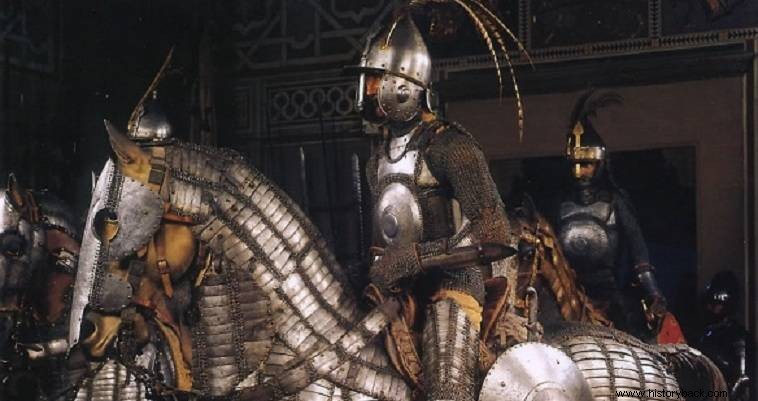 The Timariot horsemen of the Ottoman Army were, quite literally, the horsemen of destruction that the sword threatened to put even central Europe under the crescent moon.
The Timariot horsemen of the Ottoman Army were, quite literally, the horsemen of destruction that the sword threatened to put even central Europe under the crescent moon. The Timariote cavalry formed the basis of all Ottoman Armies until the middle of the 19th century. The timariots, i.e. timari holders, had, depending on the lot granted to them by the sultan, the obligation to campaign alone, or with a number of followers, whenever they were called.
The Timariotes were, in general, called Spachides. However, they were divided into several categories. The general name spachides referred to the holders of a small lot who had the obligation to serve alone or with two others, at most, followers, who were called Zebeli.
The owners of large lots, the so-called Zaimides, could each own up to 19 Tzebeli. However, it should be noted that the honors of the sphachis are not inherited. They were granted by the state in exchange for military service. In the event that the swashbuckler became weak or refused to participate in a campaign, he lost his reward.
This situation was maintained until the time of Suleiman the Magnificent. After his death, the Ottoman Empire faced economic crisis and inflation, dramatically reducing the revenue of the tribute holders. This fact did not have such an effect on their numbers, but it clearly had on the quality of their armament and their training.
Organization, equipment
The more affluent timari holders had a horse, a helmet, a chain breastplate, reinforced with iron plates of armor for the warrior's chest and back, and also accoutrements that covered the warrior's arms and legs. They also carried a shield and were armed with curved swords, a light lance and a bow. The horses of the very rich wore chain mail or thick cloth armor.
The Jebeli wore little or no armor. They were equipped with spears or javelins, bows and swords. From the 16th century, firearms were also introduced en masse to the timariot units and many men carried pistols, short-barreled muskets or arquebuses.
The governors of the European provinces had, as a rule, greater income and this was reflected in their armament and equipment. And the sultans held them in higher esteem and usually sided with the right side of the faction, in the battles. Over the years the armor was abandoned and the number of firearms that the guardians possessed increased.
However, there were also cases when timarius possessed only their sword and perhaps a javelin, or a light lance. The javelins of the Ottoman horsemen were short, about 60-80 cm and were carried in a special case adapted to the horse gear.
Until the 16th century there were also Christian guardians. They were named after the Epirotian governors, who distinguished themselves in the war of the Ottomans against the Persians. But then they were forced either to convert to Islam or to lose their lots. Most chose the first and assimilated with the conquerors.
Units and composition
The governors were organized in sub-units with the name Ala, which probably comes from Alaion of the Byzantines, which in turn, probably comes from the word Ili. The head of Ala was Alambeis. A number Ala formed a Boluk (bundle, as it was left to be called in Greek).
A number of Boluks constituted a Sanjak. The name means province and they were called so because all the timariouchi who joined it came from the same area. The number of men serving in each subunit and unit listed was not constant. In total the Ottoman Army fielded more than 100,000 honorees at the height of its power.
Timarii fought in loose order, but they could also fight in an acrobolis formation. Usually a number of them, usually the lighter armored ones, charged first against the enemy and, armed, hit him with their weapons, preparing for the attack of their more heavily armed colleagues. But at other times they all charged together, with the maximum possible speed and momentum against the opponent.
The guardians were not distinguished for their cohesion and their raid was, indeed, carried out disorderly. That's why if they were faced with a disciplined opponent, they rarely managed to break him. Instead undisciplined troops were usually swept away by their advance. Their great advantage was their usually overwhelming numerical superiority.
